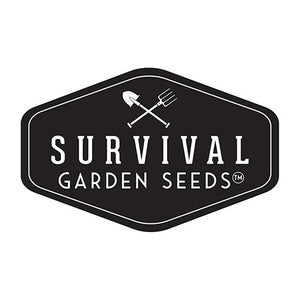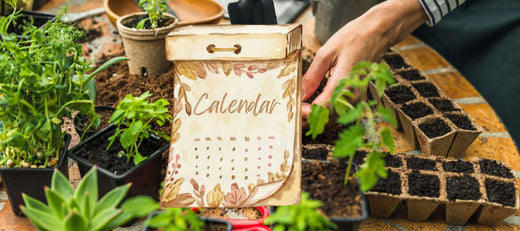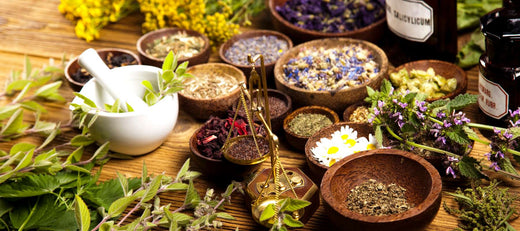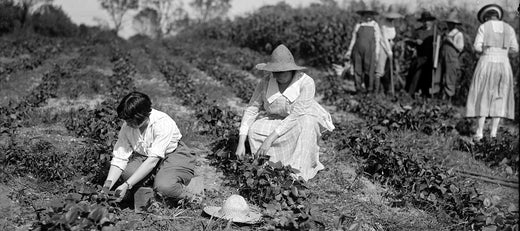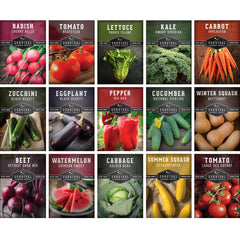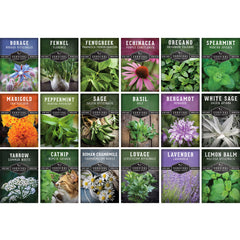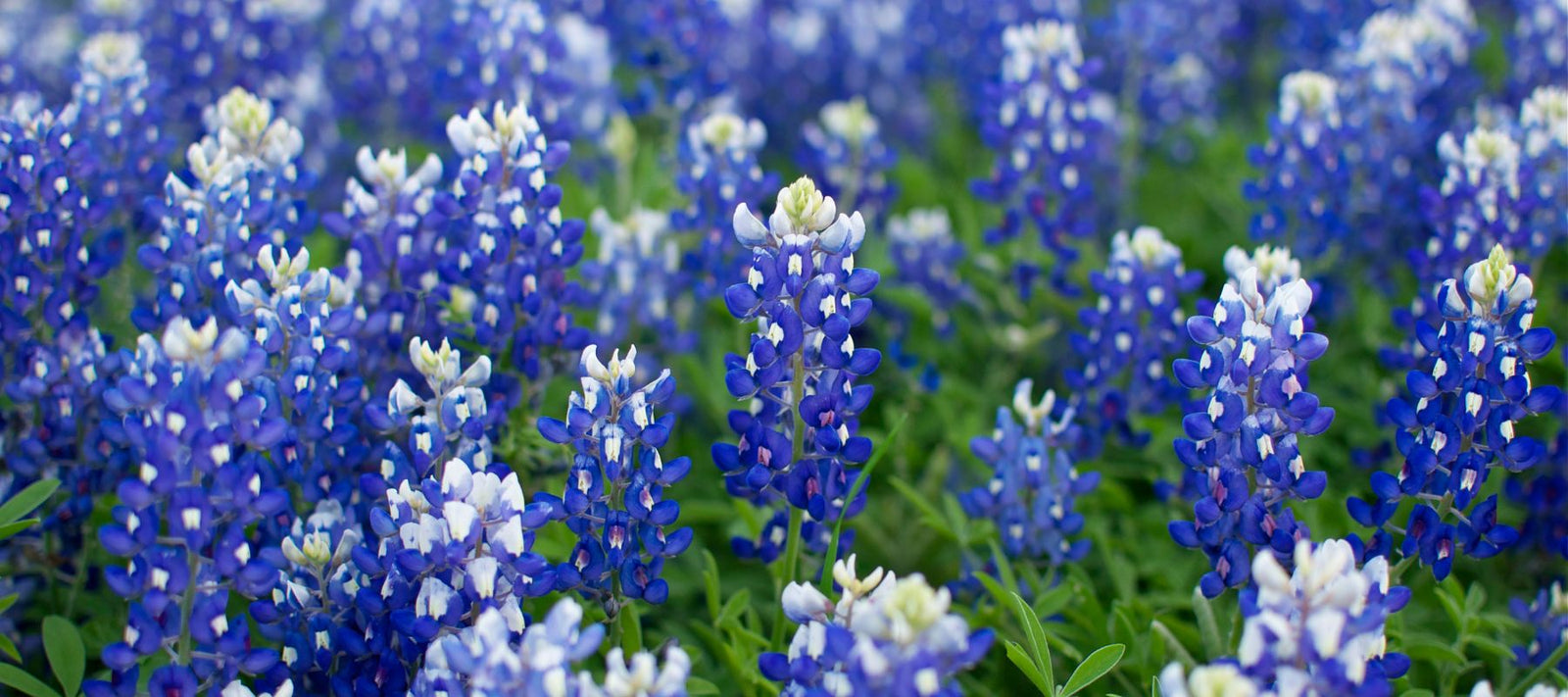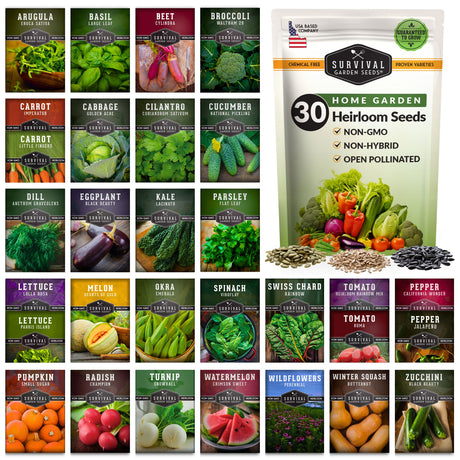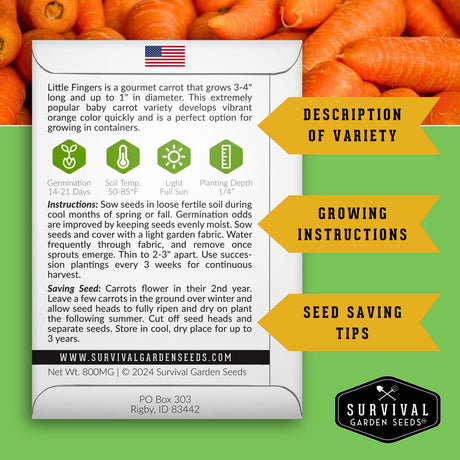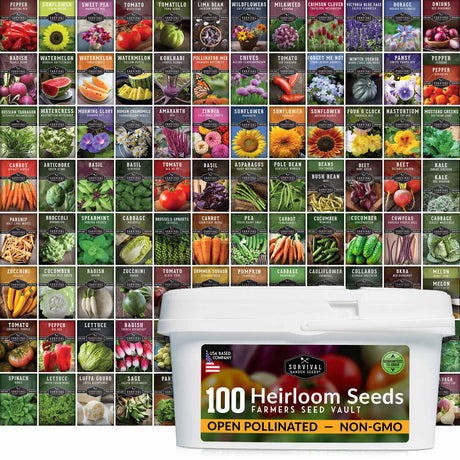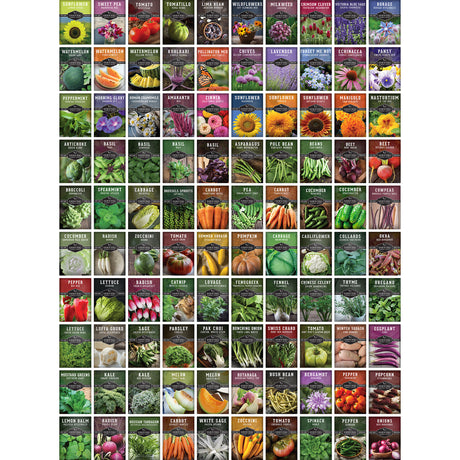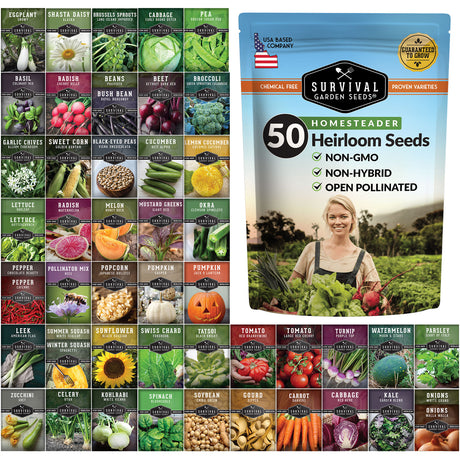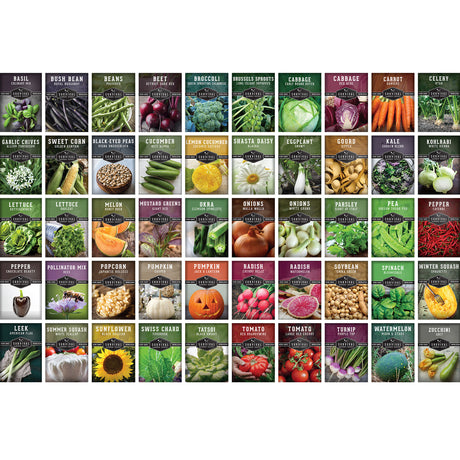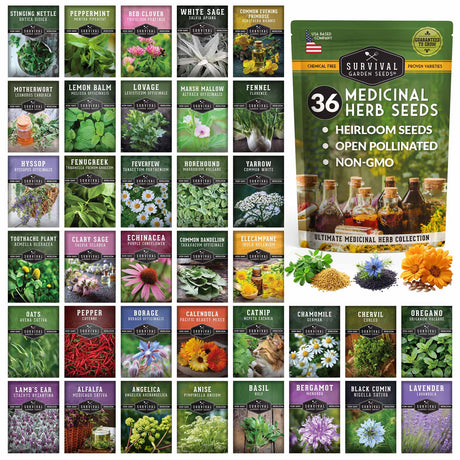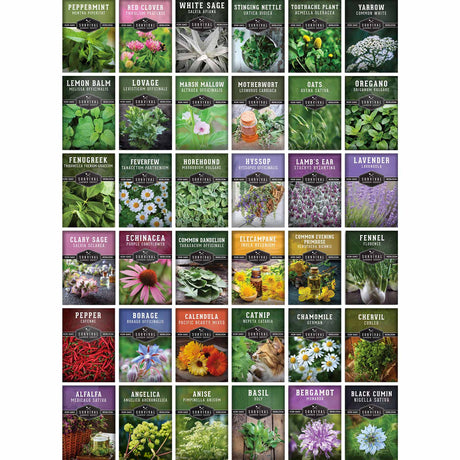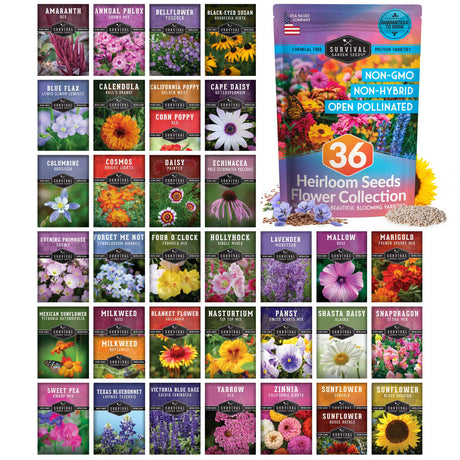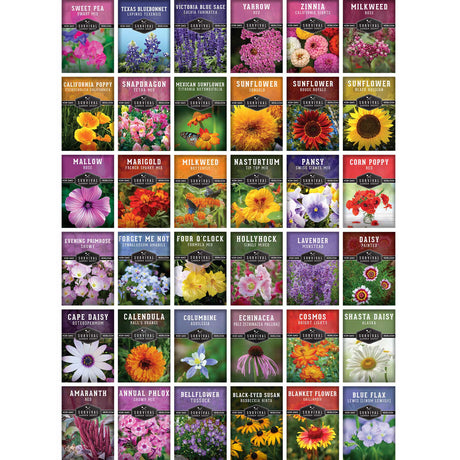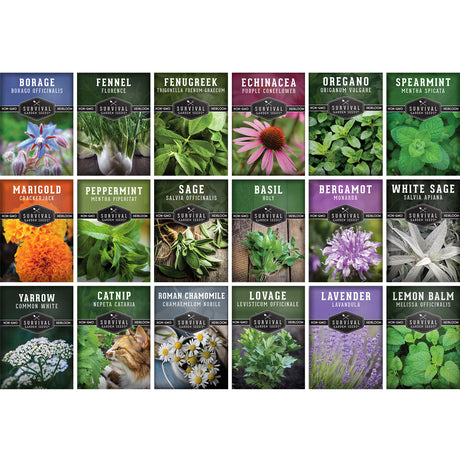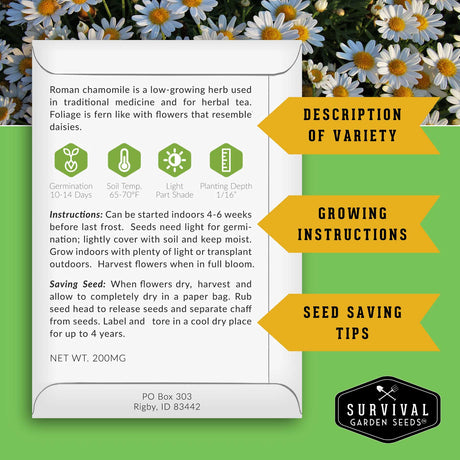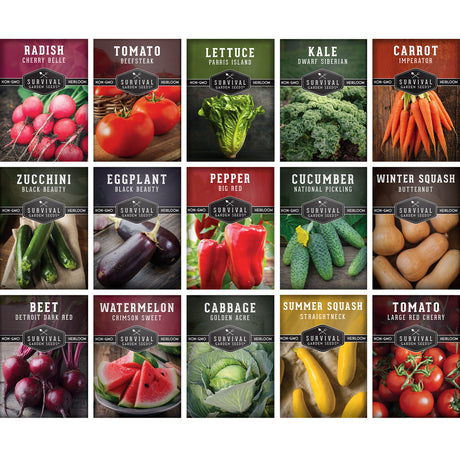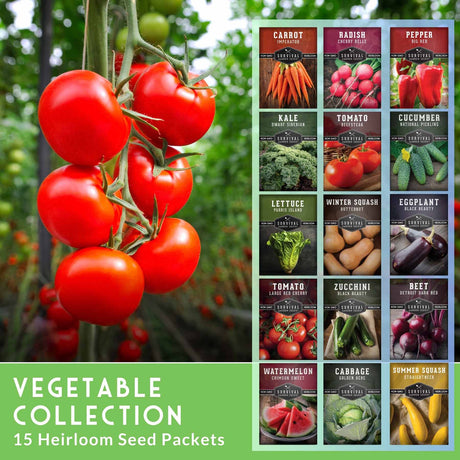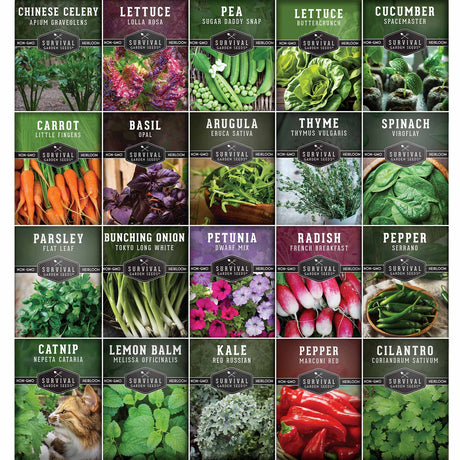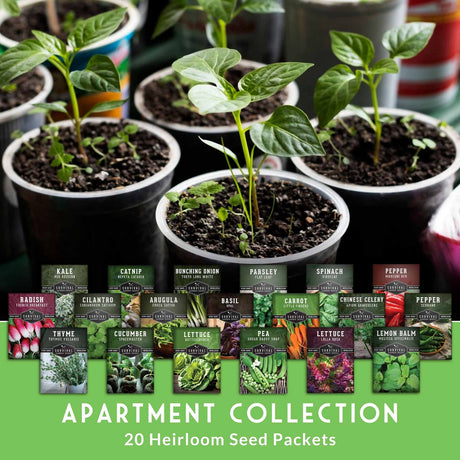We find the color blue all around us, in the sky, in the water, and in our favorite pair of jeans. However, blue is a very rare color in the plant world. Fewer than 1 in 10 plants have blue flowers, because plants have difficulty synthesizing the pigments to make them look blue. Blue symbolizes peace and tranquility, and adding blue flowers to your garden can bring a sense of calm to your world. Let’s look at some of the blue flowers you can grow to bring a little peace to your flower garden.
Borage

Borage is an edible, annual herb also known as star flower. The star-shaped blue flowers have a sweet honey flavor, and the leaves taste reminiscent of cucumber. The seeds are high in gamma-linoleic acid (GLA), an omega-6 fatty acid that can help with skin health, bone density, and supporting brain function. The flowers are attractive to pollinators, especially bumblebees. Borage has a long blooming season to brighten your garden.
- Botanical Name: Borago officinalis
- USDA Hardiness Zones: 4-8
- Light: Full Sun
- Plant Size: Grows 24-36 inches tall and spreads 1-2 feet
- Days From Seed to Bloom: 50-60 days
- Growing Instructions: Sow seeds directly after the last frost. It can also be started indoors 6-8 weeks ahead of time. If transplanting, take extra care to protect the taproot from damage. Space seedlings 18-24" apart and keep evenly moist until established.
Blue Columbine

Blue Columbine, also known as Granny’s Bonnet, is an easy-to-grow perennial wildflower that is native to the Rocky Mountains and is Colorado’s state flower. It grows well in your garden with a mix of sun and shade. The blooms are delicate white and blue and nectar-rich, making them attractive to pollinators like hummingbirds, bees, and butterflies. Blue columbine makes a lovely cut flower, and frequent harvesting will encourage more blooms.
Growing Columbine does take some patience. It is slow to germinate and slow to bloom, but once it is established, you will have lovely flowers for years to come.
- Botanical Name: Aquilegia caerulea
- USDA Hardiness Zones: 3-8
- Light: Partial shade to full sun
- Plant Size: Grows 12-24 inches tall and spreads 12-18 inches
- Days From Seed to Bloom: 60-90 days
- Growing Instructions: Sow Blue Columbine indoors 8-10 weeks before the last frost, or plant outdoors in the fall for spring growth. If starting indoors, cold stratify seeds for 2-4 weeks by storing them in a refrigerator before planting. Barely cover seeds with soil; light is necessary for germination. Germination can take 20-30 days. Transplant seedlings outdoors after danger of frost.
Lewis Blue Flax

Lewis Blue Flax gets its name from the man who discovered it, Meriwether Lewis (of Lewis and Clark fame). It is a native perennial wildflower, sometimes called Prairie Flax. This blue flower is both cold hardy and drought tolerant, making it easy to grow and a colorful addition to a xeriscape garden. Blue Flax has a long blooming season-–from April to September in some zones. The delicate blue 5-petaled blooms are attractive to pollinators, especially bees. This plant self-seeds easily and is deer-resistant. Blue flax will grow well even in poor soil but does not like to be overwatered.
- Botanical Name: Linum lewisii
- USDA Hardiness Zones: 3-9
- Light: Full sun
- Plant Size: Grows 12-36 inches tall and spreads 6-12 inches
- Days From Seed to Bloom: 60-70 days
- Growing Instructions: Direct sow Flax seeds on the surface in well-draining soil in a sunny location in the spring. Germination takes 2 to 3 weeksSpace plants 10-12" apart. Water regularly but avoid overwatering.
Forget Me Not

Forget Me Nots are characterized by tiny blue flowers. You may come across a couple of different varieties, the woodland Forget Me Not (genus Myosotis) and the variety we sell at Survival Garden Seeds, Chinese Forget Me Not (genus Cynoglossum), also known as Blue Showers or Hound’s Tongue. These flowers are perennial in warmer climates but can be grown as annuals elsewhere. The delicate, tiny flowers attract pollinators and make a lovely cut flower. Forget Me Nots prefer cooler weather and re-seed easily.
- Botanical Name: Cynoglossum amabile
- USDA Hardiness Zones: 3-9
- Light: Full Sun
- Plant Size: Grows 6-12 inches tall, and spreads 12-18 inches
- Days From Seed to Bloom: 6-8 weeks
- Growing Instructions: Sow directly outside as soon as the soil is workable, or start inside 3-4 weeks ahead of time to transplant after the last frost date. Germination takes 5 to 8 days. Completely cover seeds because complete darkness is needed for germination. Transplant or thin to 10 inches apart.
Russell Lupine

Russell Lupine is a native North American perennial wildflower that can add more than blue to your garden. Lupine’s tall stalks of blossoms tend to be naturally blue and purple, but they can also develop as yellow, pink, and white. The impressive 3-foot tall stalks are a favorite of bees and look beautiful in cut flower arrangements. Lupine is deer-resistant and a nitrogen-fixer that can help enrich your soil. It has very deep roots and spreads mostly by re-seeding.
- Botanical Name: Lupinus polyphyllus
- USDA Hardiness Zones: 3-9
- Light: Full Sun
- Plant Size: Grows 3-4 feet tall and spreads 1-2 feet
- Days From Seed to Bloom: 150 days
- Growing Instructions: Cold stratification or scarification can improve germination rates. Germination typically takes 10-14 days if planted in the spring. Direct sow outdoors as soon as soil can be worked in the spring or after the first frost in autumn for blooms the following spring. Choose moist, well-draining soil with full sun and space 18 inches apart.
Victoria Blue Sage

Victoria Blue Sage is commonly known as mealycup sage and is grown mostly for its ornamental beauty rather than for culinary purposes like most sages. It is a native, perennial wildflower that is easy to grow even in poor soil. Victoria Blue sage is a favorite of bees, butterflies, and nectar-loving birds. Originating in Texas and Mexico, this plant is drought tolerant and resists most pests, deer, and diseases. In colder climates, it may be grown as an annual. The tall stalks of blooms are an excellent addition to cut flower arrangements and retain their beauty when dried. Frequent harvesting of blooms will increase flower production.
- Botanical Name: Salvia farinacea
- USDA Hardiness Zones: 3-9
- Light: Partial Shade
- Plant Size: Grows in mounds 1-2 feet tall and spreads 1-2 feet
- Days from Seed to Bloom: 60-75 days
- Growing Instructions: Sow sage seeds indoors 6-8 weeks before the last frost. Germination should take between 5 and 15 days. After the plant is about 4 inches high and two sets of true leaves appear, transplant outdoors, spacing 18-24 inches apart. In subsequent years, trim dead woody parts at the end of winter to prepare for tender spring growth
Texas Bluebonnet

The Texas Bluebonnet is a variety of lupine that is native to Texas and that state’s official state flower. It gets its name from the bonnet shape of the florets on the bloom stalks. It is a perennial wildflower that thrives under full sun and is quite drought-resistant. It was a favorite of Lady Bird Johnson, and she encouraged the flowers to be planted along highways in Texas as part of the Highway Beautification Act. The vibrant blue flowers are a magnet for bees, butterflies, and other pollinators. The growing process is similar to the Russell Lupine mentioned previously.
- Botanical Name: Lupinus texensis
- USDA Hardiness Zones: 7-9
- Light: Full Sun
- Plant Size: Grows 12-24 inches tall and spreads 12-18 inches
- Days from Seed to Bloom: 150 days
- Growing Instructions: Scarify and pre-soak Bluebonnet seeds for 48 hours for improved germination. Germination usually takes between 10-14 days. Begin seeds indoors 8-10 weeks before the last frost date or sow directly in the garden in late fall. Plant seeds shallowly, ensuring good contact with soil, and keep seeds damp until established. Space plants 10 inches apart.
Lord Nelson Sweet Pea

Lord Nelson Sweet Pea is a variety of sweet pea known for its deep blue fragrant flowers. It is an English heirloom named for the British admiral. This is an annual flowering plant that has a climbing habit perfect for fences or trellises but also does well in containers. The intense blue flowers are attractive to bees and butterflies and make a lovely, fragrant addition to cut flower arrangements. Despite the inclusion of "pea" in its name, this plant is not edible and is toxic to humans and animals. Ensure it is planted in a location inaccessible to children and pets.
- Botanical Name: Lathyrus odoratus
- USDA Hardiness Zones: 2-11
- Light: Full Sun
- Plant Size: Grows in 6-8 foot vines and spreads 2-3 feet
- Days From Seed to Bloom: 55-70 days
- Growing Instructions: Soak seeds overnight and scarify any that do not swell to promote germination. Sow indoors or directly outside once the soil is workable. Germination takes about 10 to 21 days. Transplant seedlings once they reach 2". Climbing vines will require trellising or other support.
When choosing to add to the rainbow of colors in your garden, why not add one of the rarest colors, blue? Blue flowers have evolved to attract bees and butterflies that see in the ultraviolet spectrum. This will help your whole garden thrive and the true blue beauty of these blooms will bring a sense of peace and tranquility to your landscape.

